Angkor Wat, the name itself is enough to conjure up images of magnificence, of a scale that one relates to only in surreal dreams. The ancient temple dating back to the Khmer Empire in what is now Cambodia is one of the most enduring wonders of the world. It is a magnet that draws millions of tourists from around the world to Siem Reap. The Angkor Wat temple however still remains as an intriguing monument to the grandeur of its times hiding within its walls many unanswered questions. The Angkor Wat temple continues to be a giant puzzle that still bemuses lay visitors and experts. Shrouded in heaps of mysteries, myths, legends, and facts the Angkor Wat temple is a standing ovation to the people who visualized it and then gave it a concrete shape. Here are some facts about Angkor Wat that will make it clear as to why it is considered to be one of the top man-made wonders of the world.
Table of Contents
Incredible Facts About Angkor Wat, Siem Reap, Cambodia
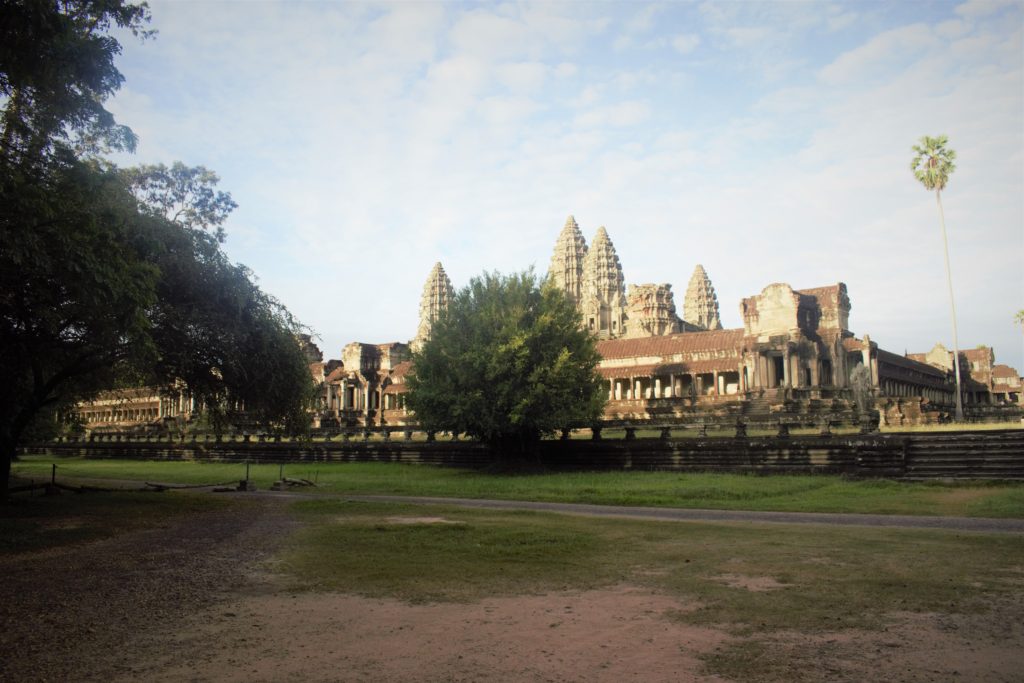
1. Angkor Wat is Just One Temple
Many confuse Angkor Wat with the Angkor Archaeological Park and think it is a complex of temples. But one of the things you should know before getting there is that Angkor Wat is just one single temple within the Angkor Archaeological Park, the biggest and the finest built by the Khmer Empire in Cambodia. Some of the important temples apart from Angkor Wat are Ta Prohm, Preah Khan, Bayon Temple, Neak Pean, Banteay Srei, Phnom Bakheng, Phimeanakas, Kbal Spean and others. The ancient temples are also not restricted to only Siem Reap and its vicinity. In fact, one of the oldest temples known as the cradle of the Khmer civilization is Phnom Da located at a distance of more than 400 kilometers away in the Takeo Province.
2. Angkor Wat – Largest Religious Monument
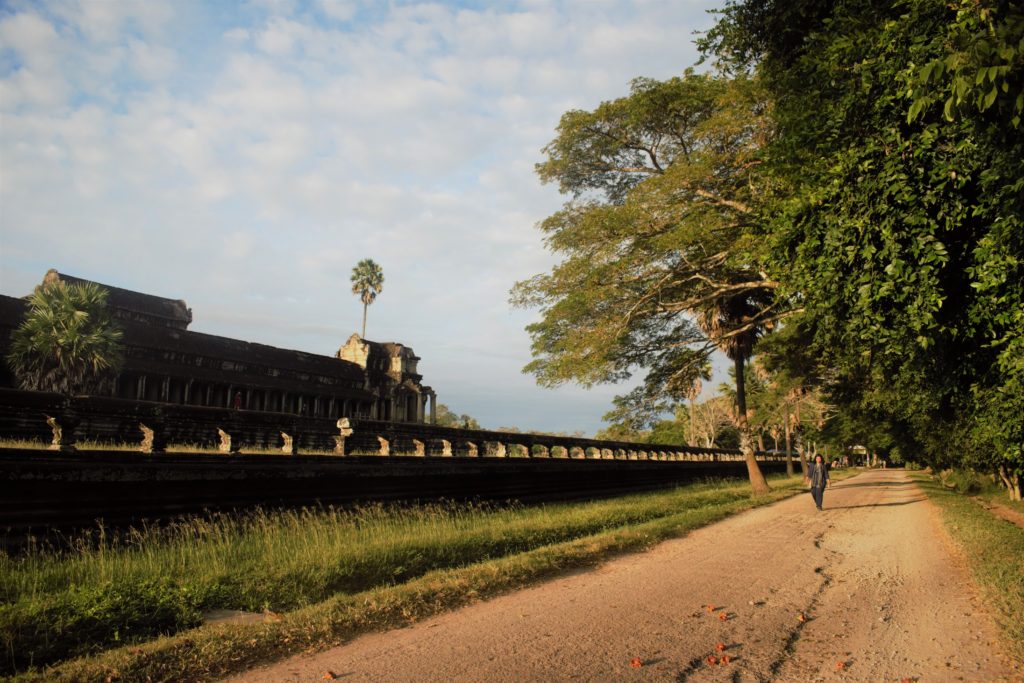
One of the amazing facts about Angkor Wat that makes it stand out from any other architectural or historical monument is its massive scale. The Angkor Wat complex encompasses a massive area of about 162.6 hectares. The Angkor Wat temple is said to be the largest religious monument in the world.
3. Angkor Wat – Temple of Vishnu
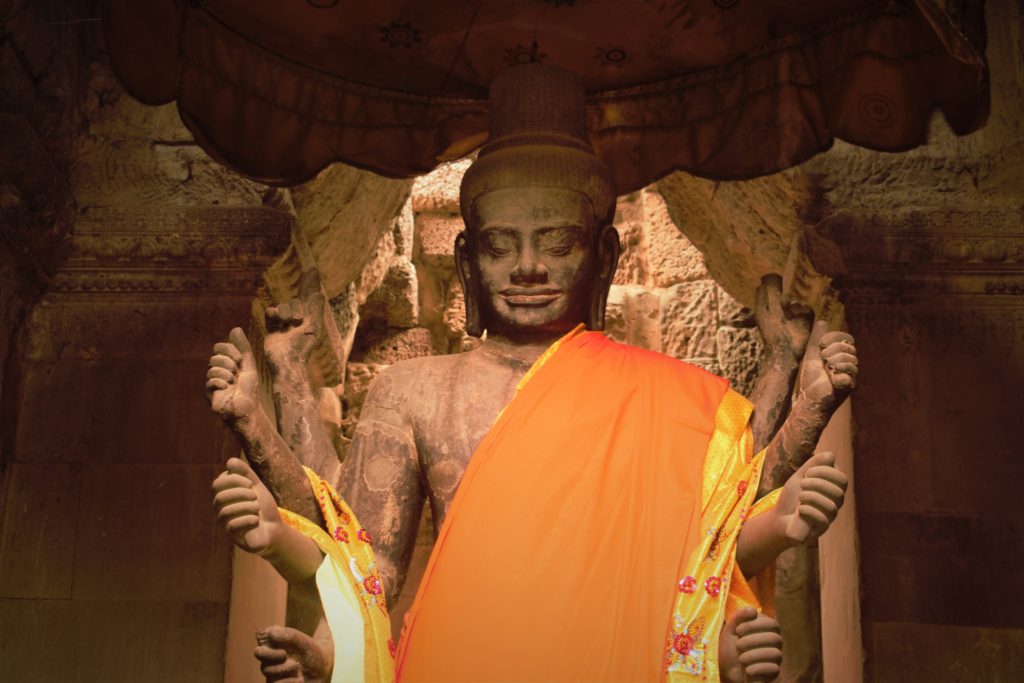
The Angkor Wat Temple was originally built as a Hindu temple dedicated to Vishnu by Suryavarman II sometime between 1100 to 1150, which is seen as a change as most of the previous temples were Shiva temples.
4. Angkor Wat is a West Facing Temple
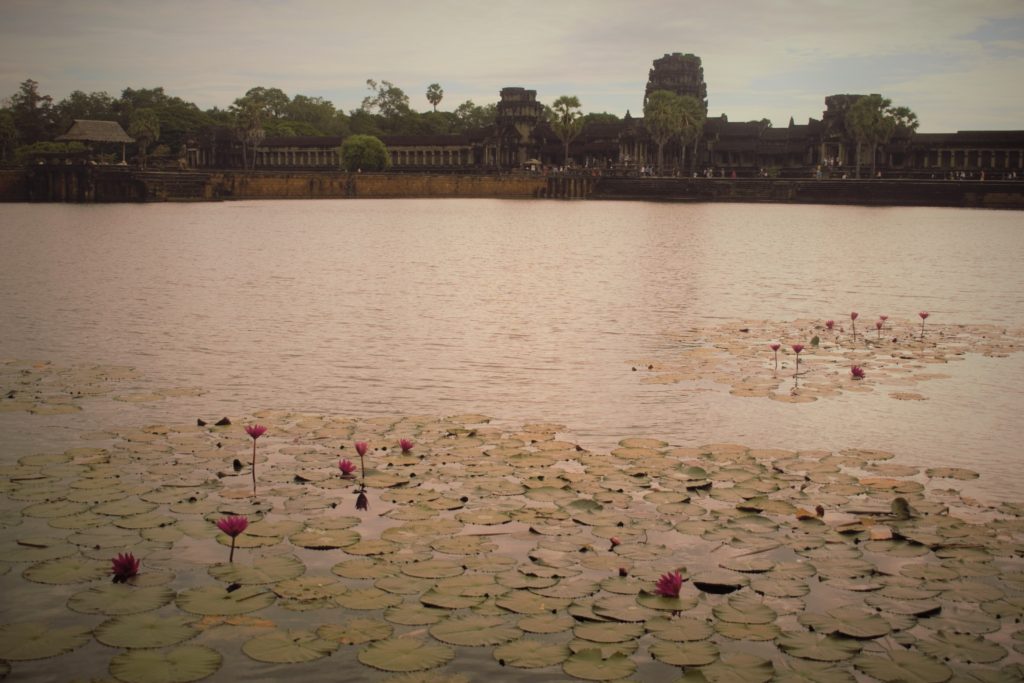
The Angkor Wat temple is having an orientation towards the West as opposed to the practice generally followed in the other temples of the region.
5. Bas Reliefs at Angkor Wat
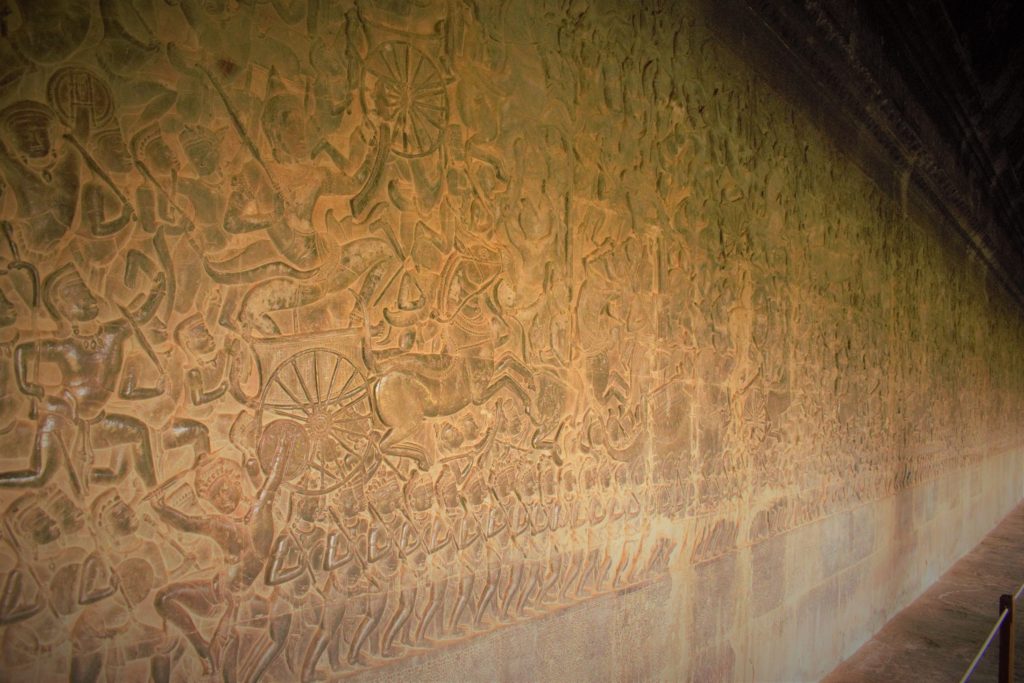
The Bas Reliefs at the Angkor Wat temple have an anti-clockwise orientation as opposed to the normal Clock-wise orientation as per Hindu tradition.
6. Theory of Angkor Wat Being A Tomb
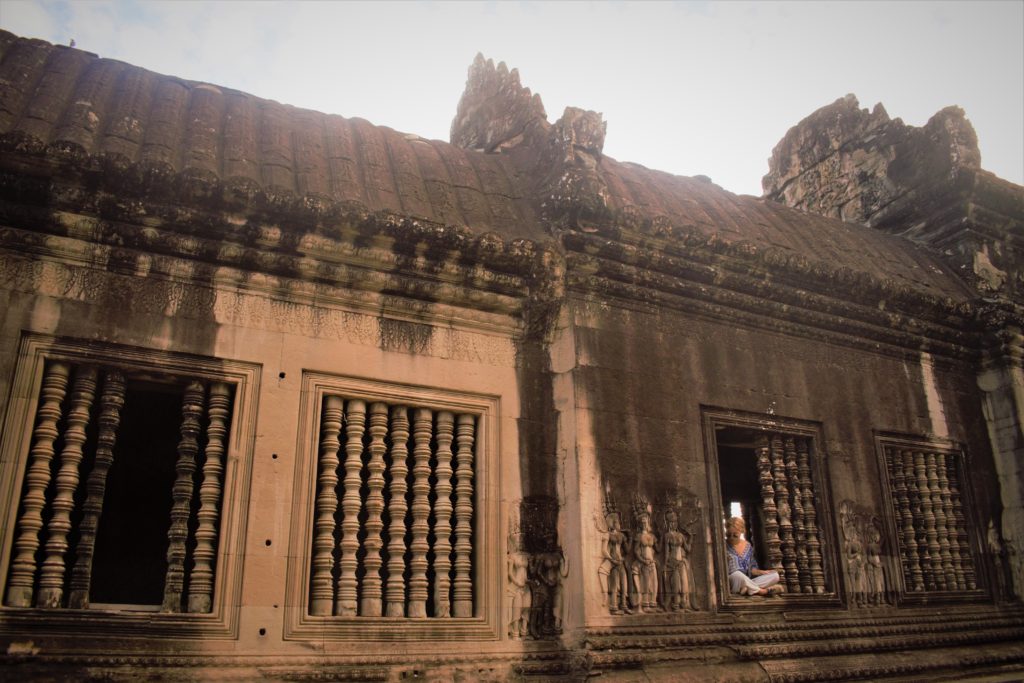
The skewed orientation has many believe that the Angkor Wat temple was originally associated with Hindu funeral rites and that it may even have been intended as a tomb for King Suryavarman II. However, it may be noted that Hindu temples can face any direction except the south which is considered inauspicious. There are many Hindu temples that face west in India and elsewhere that have nothing to do with funeral rites. In fact, most temples are located in the west with the deities facing the east. One of the notable exceptions here is the largest functioning Hindu temple in the world, Srirangam where the deity is facing south.
7. The Humungous Task of Building Angkor Wat
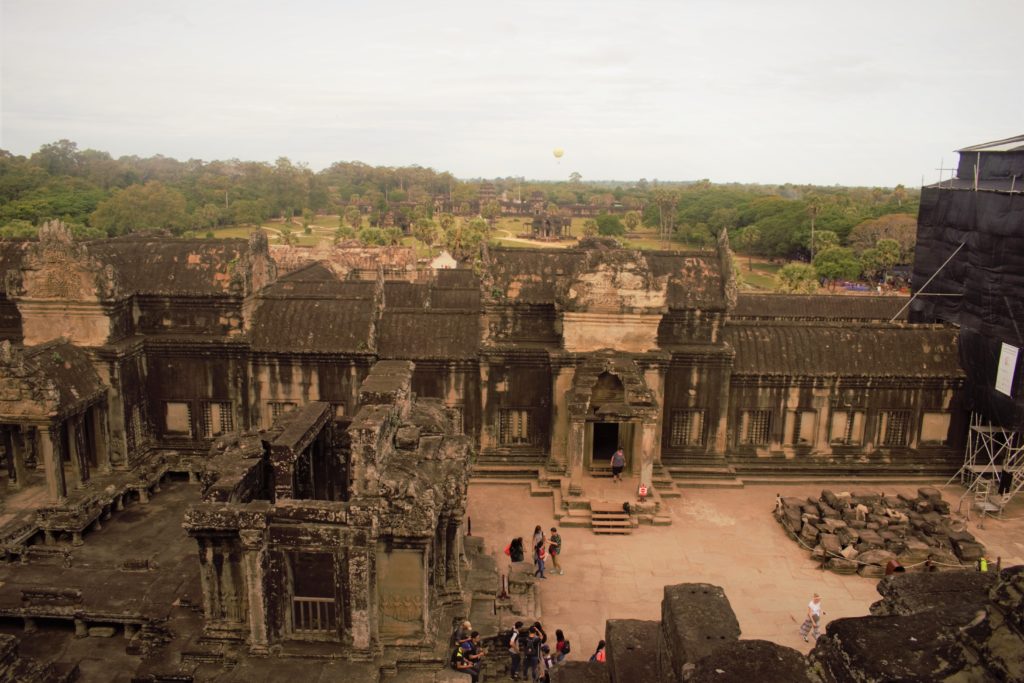
The massive Angkor Wat temple is believed to have taken over 30 years for completion, a team of more than 300,000 people including laborers, architects, sculptors, and masons worked to build the temple.
8. Angkor Wat And The Two Kings
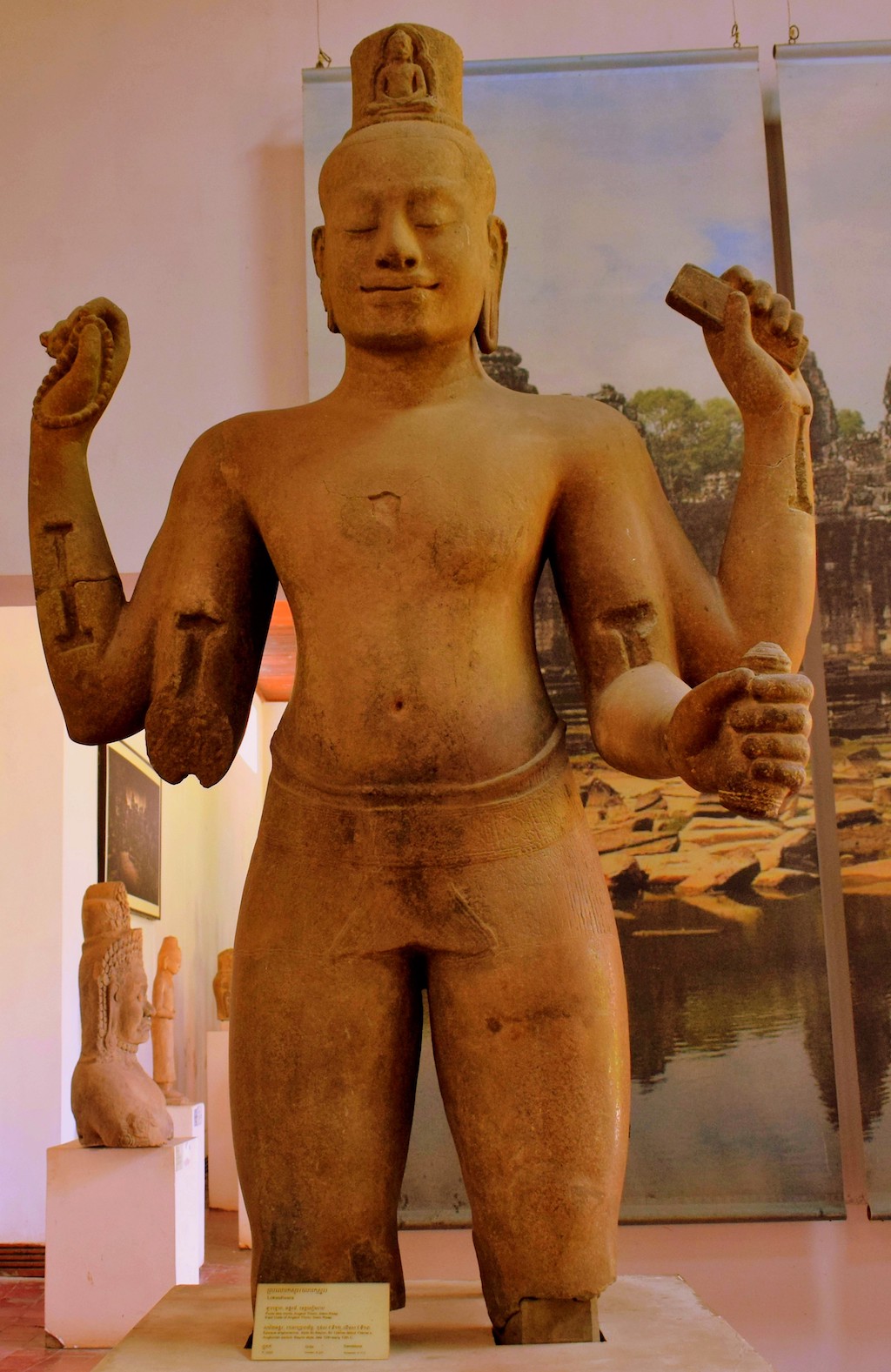
The construction of the Angkor Wat temple was started by Suryavarman II who died before its completion. It was left to King Jayavarman VII to complete the temple.
9. Angkor Wat – From Hinduism To Buddhism
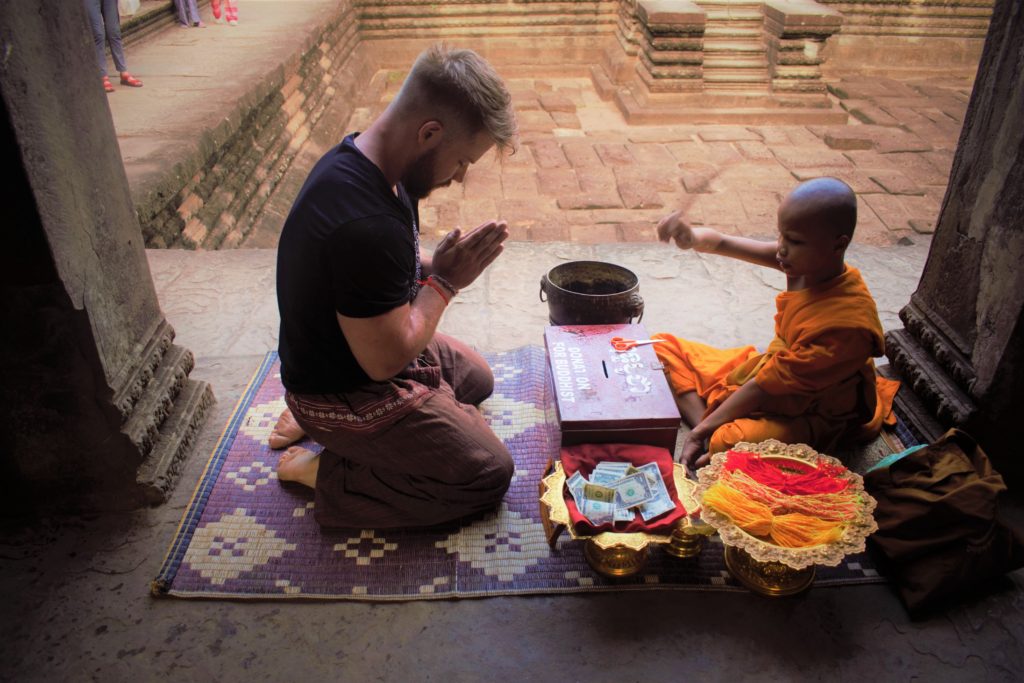
King Suryavarman II started building the Angkor Wat temple as a Hindu temple dedicated to Vishnu. King Jayavarman VII who had embraced Buddhism converted it to a Buddhist temple.
10. Angkor Wat – Tale of A Lost Name
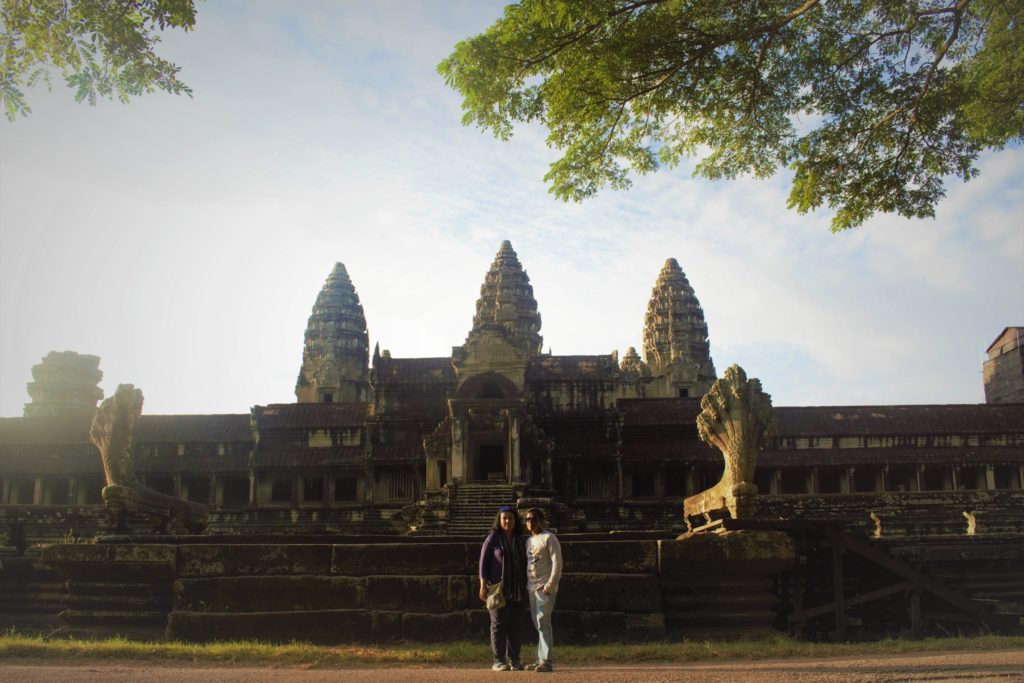
One of the most surprising facts about Angkor Wat is that its original name is lost in the maze of history. Though the temple was known far and wide for its magnificence, it is a travesty of fate that its original name is lost. The name Angkor Wat which translates as, “City of Temples“, was the name given to the temple sometime in the 15th century. Some believe that Angkor Wat may have been named after Vishnu as Varaha Vishnuloka or Parama Vishnuloka.
11. Angkor Wat Grander Than Monuments of Greece And Rome
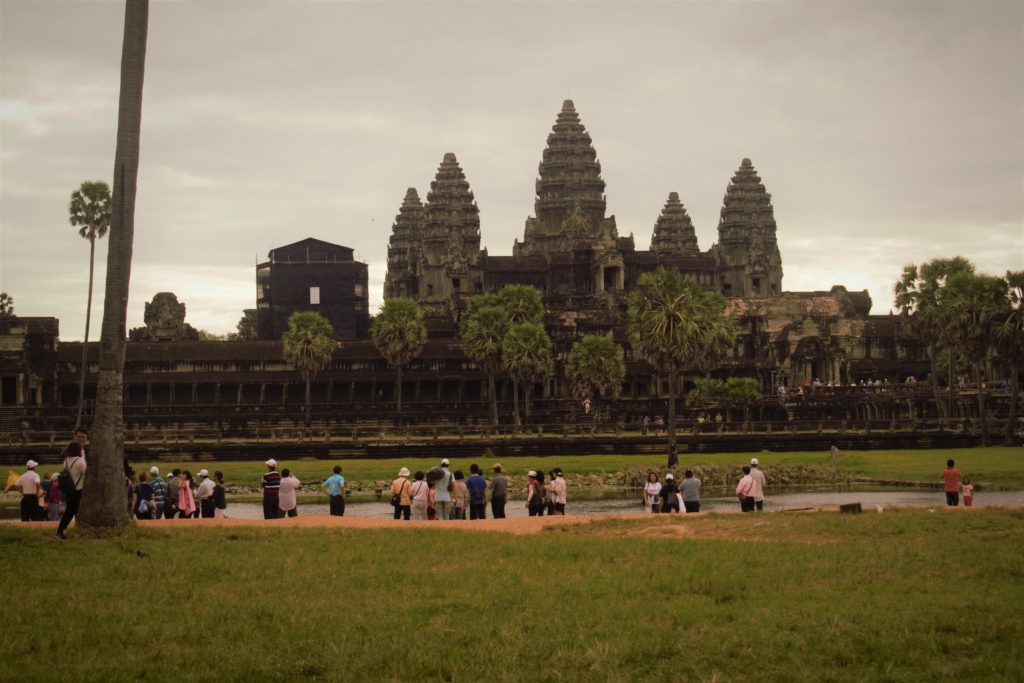
The Angkor Wat temple which gradually sank into the jungle, lying abandoned was re-discovered in the 19th century by a French explorer Henri Mouhot. Struck by the sheer grandeur of the temple Henri Mouhot wrote, “It is grander than anything left to us by Greece or Rome“. He actually goes on to add that the temple rivals that of the Solomon temple mentioned in the Hebrew Bible and must be the work of an ancient Michael Angelo.
12. Cambodia’s Pride – Angkor Wat
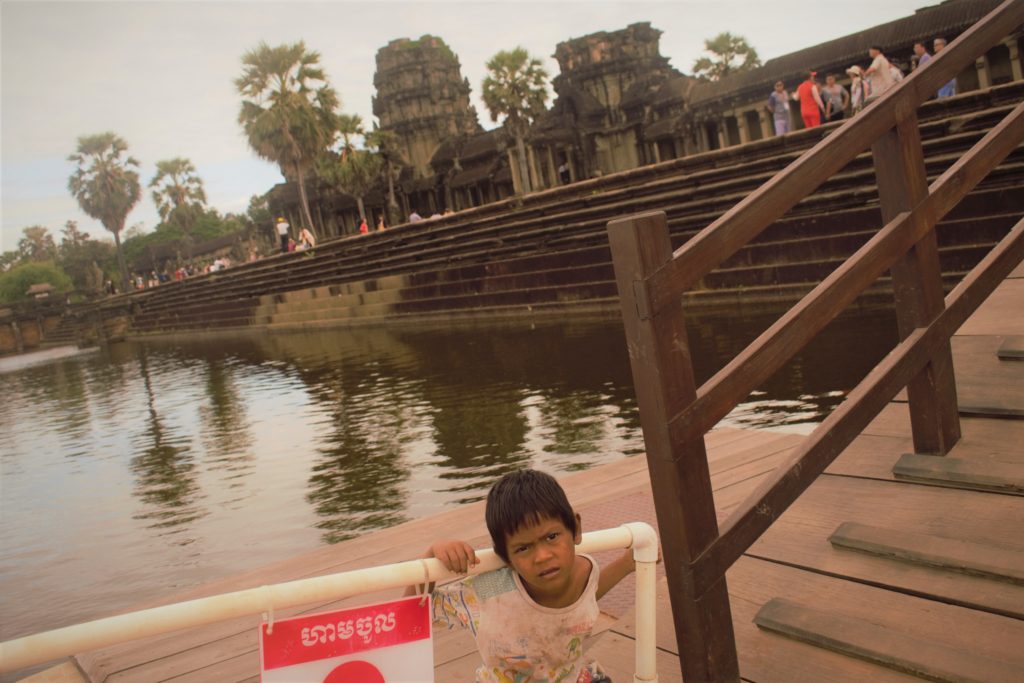
The Angkor Wat temple is in many ways synonymous with Cambodia and hence it is a National Emblem and features on the Cambodian flag. The Angkor Wat temple is depicted in white on a horizontal red band between two horizontal blue bands on the Cambodian national flag.
13. Principles of Hindu Cosmology & Temple Architecture
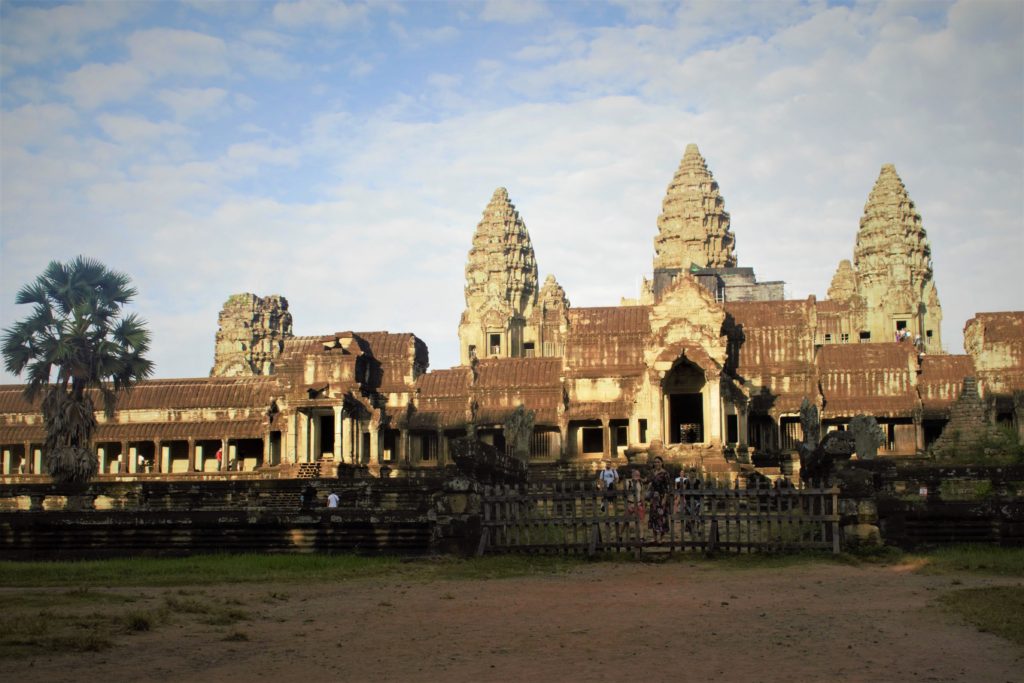
One of the remarkable facts about Angkor Wat is that its construction is based on the principles of ancient Hindu Cosmology and temple architecture. The design of the temple is a representation of the mythical mountain Meru which is believed to be the center of the universe. The five towers that form a quincunx represent the five peaks of Mount Meru.
14. Angkor Wat is An Engineering Marvel
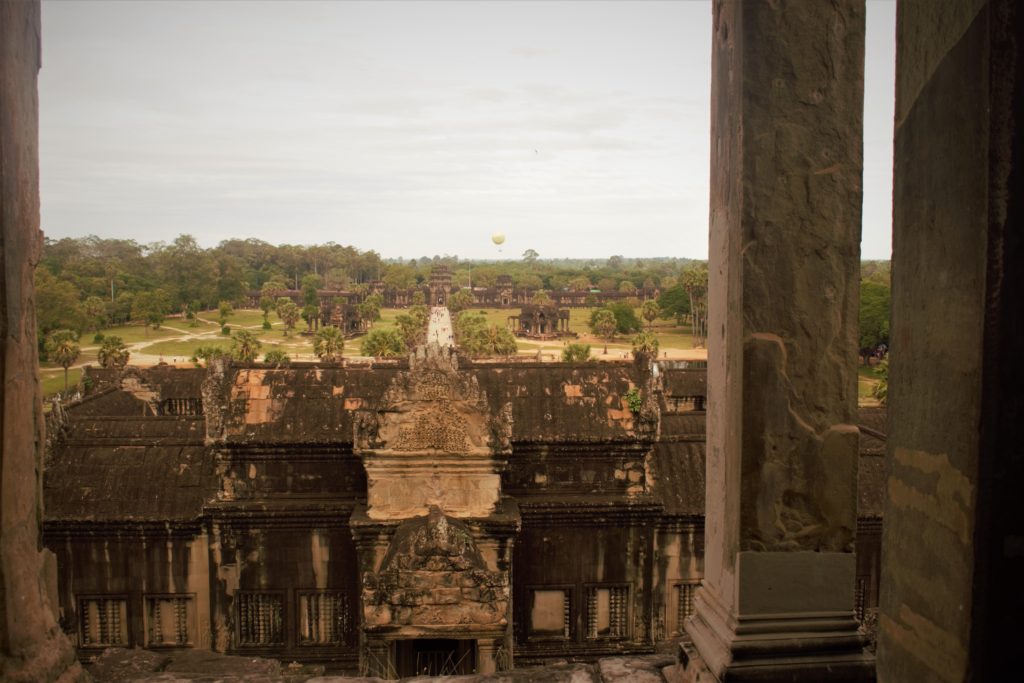
The Angkor Wat temple is mainly constructed with sandstone blocks. It is still a mystery regarding the binding material used to join the sandstone blocks. It is however believed that natural resins and slaked lime. The outer walls of the temple have been made with white laterite.
15. Angkor Wat is A Shadow of Its Former Self
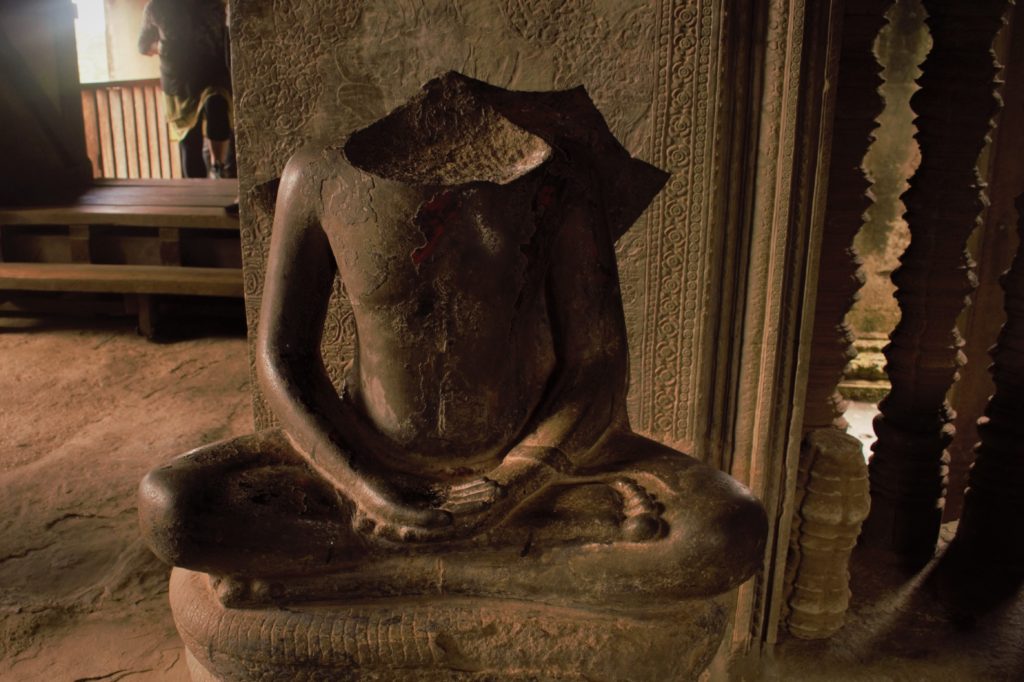
In its heyday, the Angkor Wat temple is believed to have had gilded towers and sculptures along with exquisite doors. However today none of these can be seen due to the ravages of nature and time as well as the greed of invading marauders.
16. Classical or Angkor Wat Style of Architecture

The Angkor Wat temple lends its name to the Khmer architectural style of the period which is classified as ‘Classical’, or ‘Angkor Wat Style’. Apart from the Angkor Wat temple, others like Banteay Samre have been built in this style.
17. Bas Reliefs From Hindu Mythology
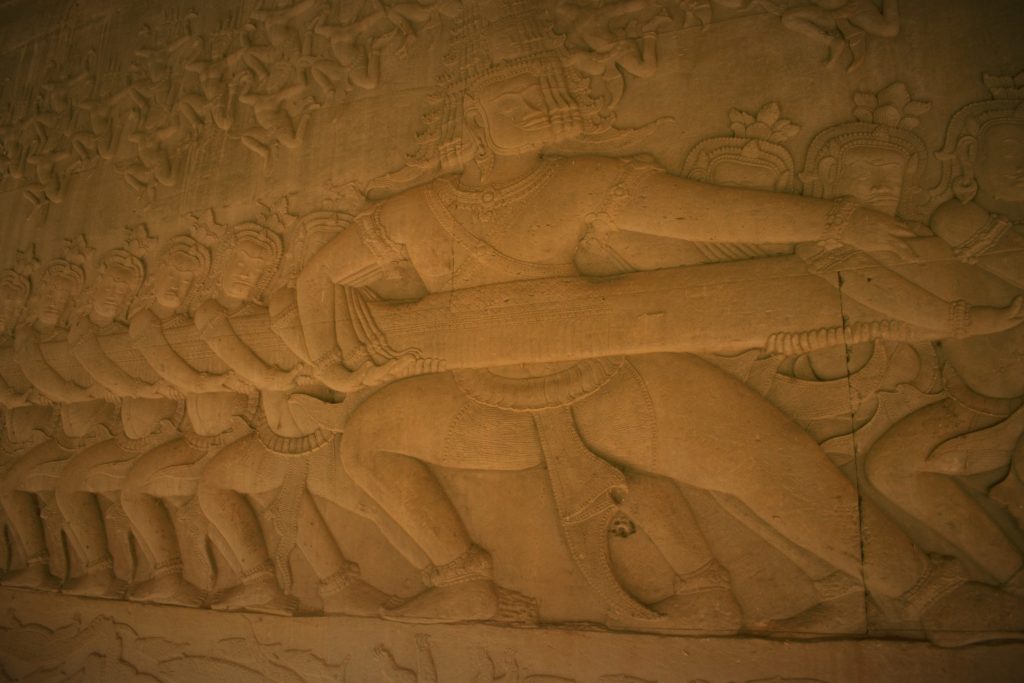
The external gallery of the Angkor Wat temple is embellished with bas-reliefs from Hindu mythology that cover an area of about 12,000 to 13,000 square meters. The scenes depicted include the Kurukshetra War from the Mahabharata, the churning of the ocean of milk by the Devas and Asuras from Hindu mythology, scenes from the Ramayana, and scenes of the court and ceremonial processions of the King Suryavarman II.
18. Angkor Wat – A Stairway To Heaven
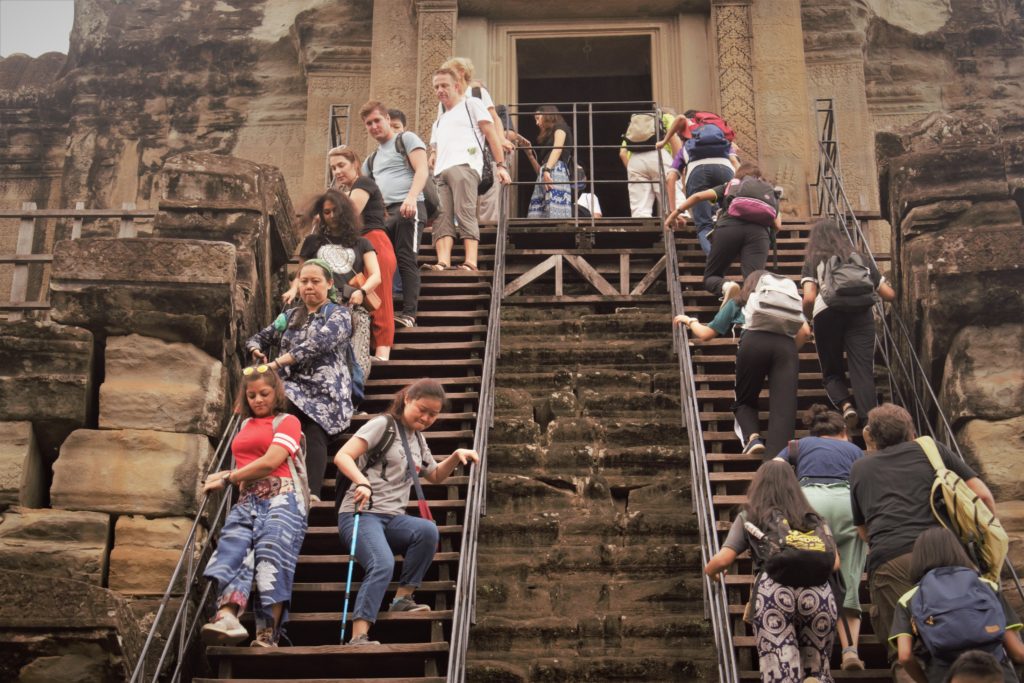
One of the most intriguing facts about Angkor Wat is its steep stairs. The stairs that one needs to climb the top levels are inclined as much as 70 degrees. Not only that but even the length of the riser is phenomenal and one needs to literally hoist the body with the help of the rope or railing built alongside it. A modern addition to help tourists, of course. The reason for these steep stairs could be religious and spiritual in that it symbolizes the difficulty level of reaching God, or it could be architectural as this would result in a smaller base for the structure.
19. Apsaras And Devatas of Angkor Wat
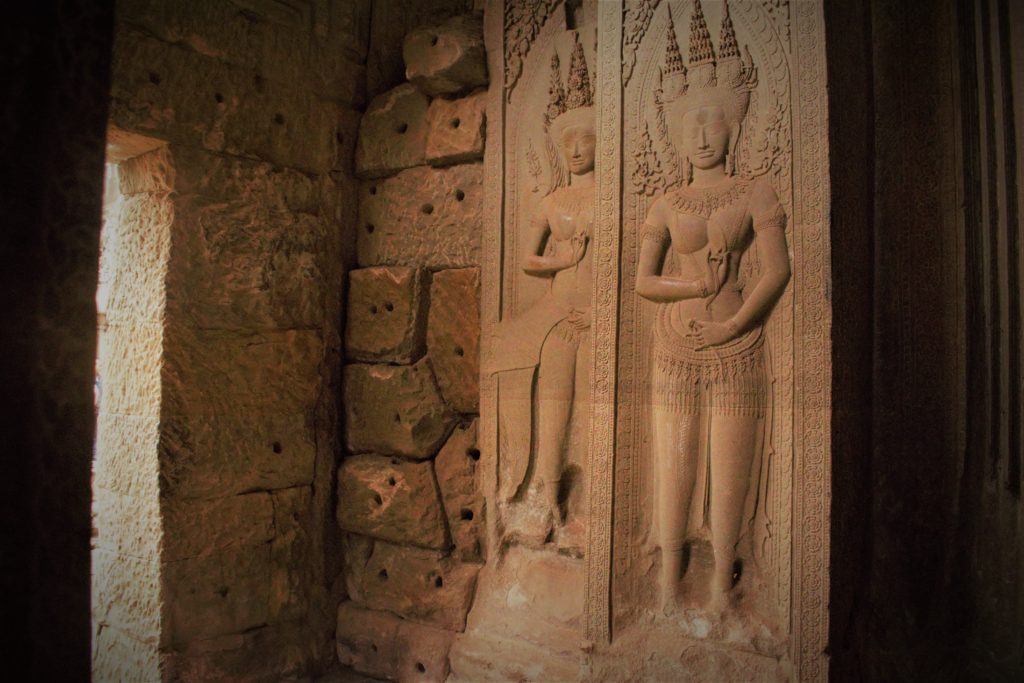
Bas-reliefs of Apsaras and Devata from Hindu mythology can be found everywhere, sometimes in hidden chambers and corners of the Angkor Wat temple. However, one of the facts about Angkor Wat to know before getting there is that there is a difference between the Devatas and Apsaras which many times are confused for each other by visitors. the Apsaras are depicting in a dancing pose while the Devatas are found standing. Some 2,000 Devatas can be found in the bas-reliefs of Angkor Wat.
20. Statue of Vishnu
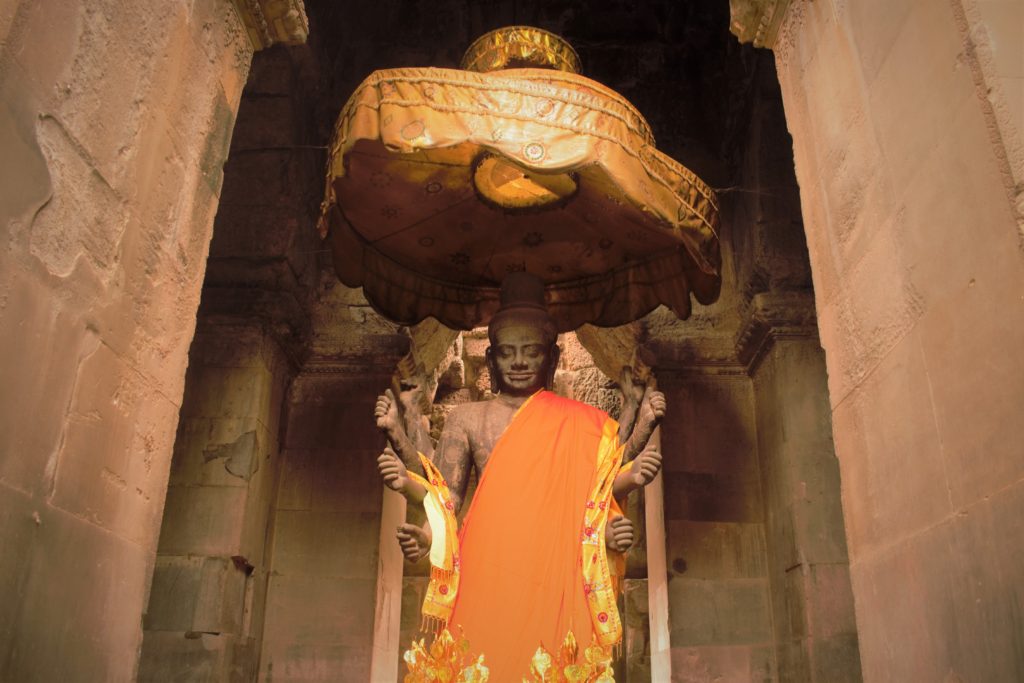
There is a statue of Vishnu known as Ta Reach below the southern tower of the Angkor Wat Temple. It is believed that this statue could have been earlier a part of the central temple itself. The eight-armed Vishnu idol is said to have the head of Buddha. It is believed that Vishnu’s head was replaced with that of Buddha after the temple was converted into a Buddhist one.
21. Libraries of Angkor Wat
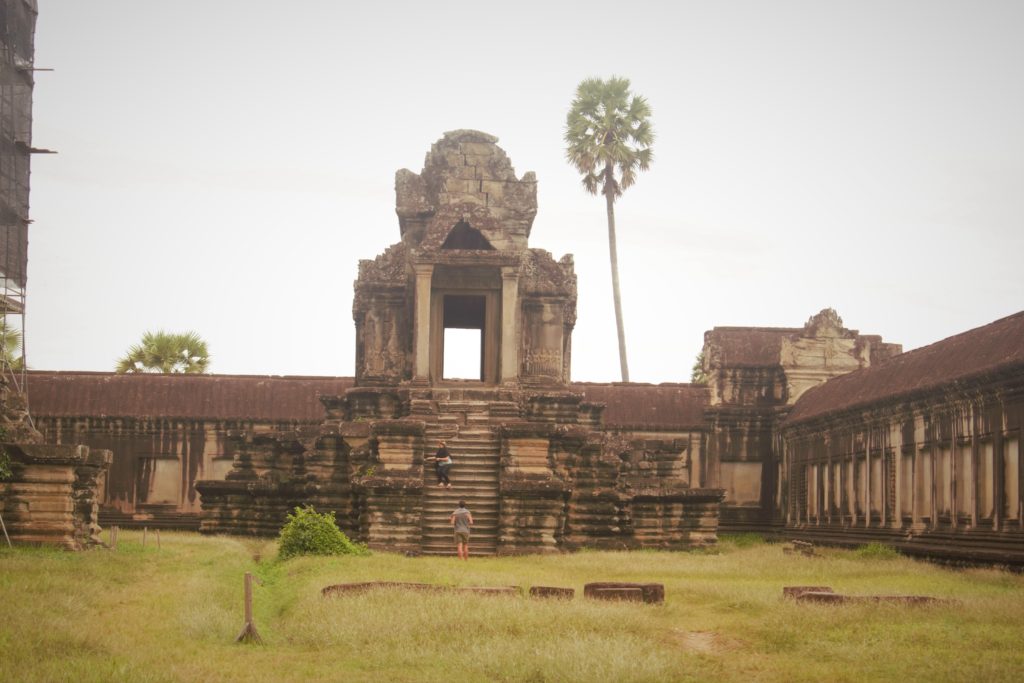
Another interesting fact about Angkor Wat is the Library Building. Angkor Wat has three pairs that is, 6 Library buildings in all. The purpose of the so-called ‘libraries’, is not known.
22. Ancient Indian Script Inside Angkor Wat
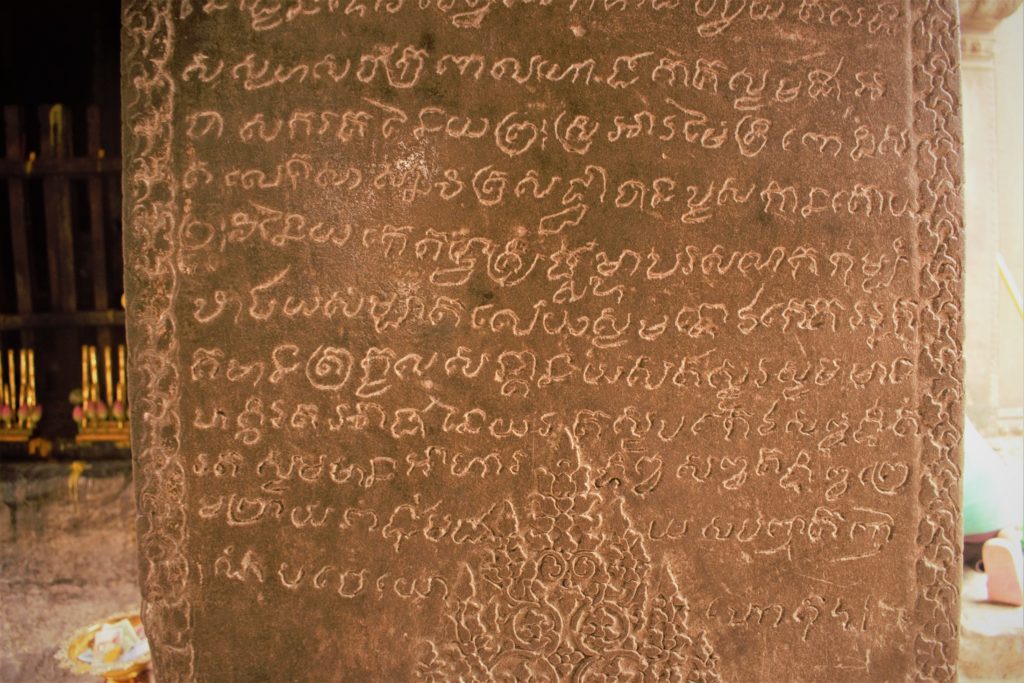
The Indian connection can be found everywhere in Angkor Wat. Right from the Bas reliefs that depict scenes from Hindu mythology to the inscriptions. Indian scripts like Brahmi, Pallava, Sanskrit, etc., have influenced the Khmer script.
23. Visitors To Angkor Wat
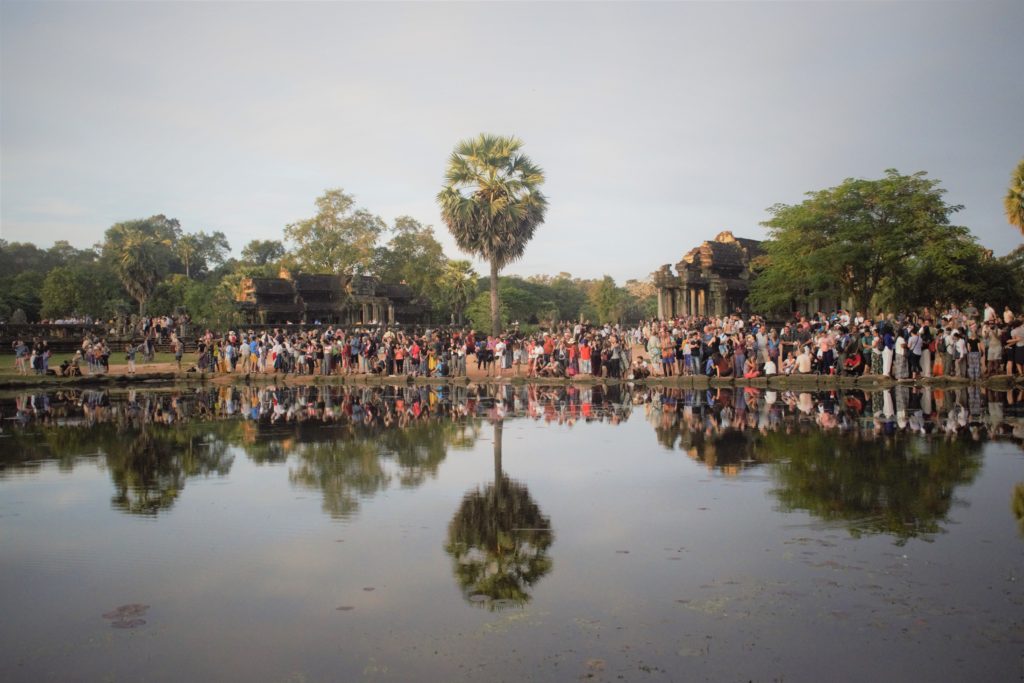
The grandeur and intriguing mysteries of Angkor Wat draw tourists in millions. It is estimated that over 2.6 million visitors throng the complex of Angkor Wat every year. But when you visit the temple you are sure to find places that are secluded and bereft of any other souls. This is because to the complex is so massive.
24. UNESCO World Heritage Site
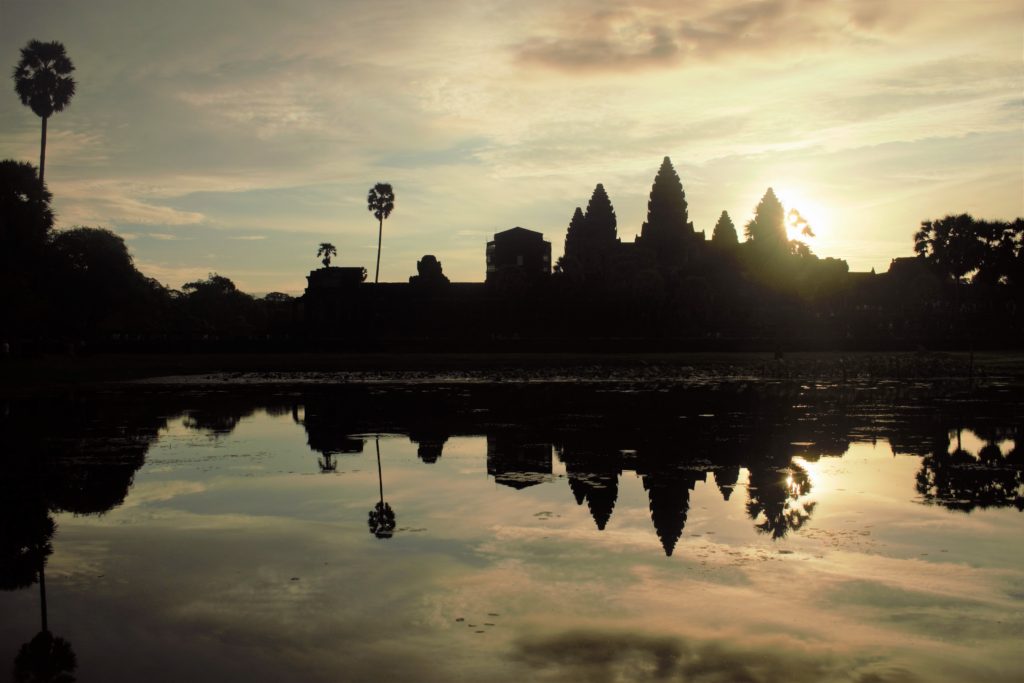
The Angkor Wat temple is listed as a UNESCO World Heritage Site along with other important temples, Barays, and other structures of the Angkor Archaeological Park. In 1992 Angkor Wat was listed as one of the UNESCO World Heritage sites in danger. This classification was revoked in 2004.
25. The APSARA
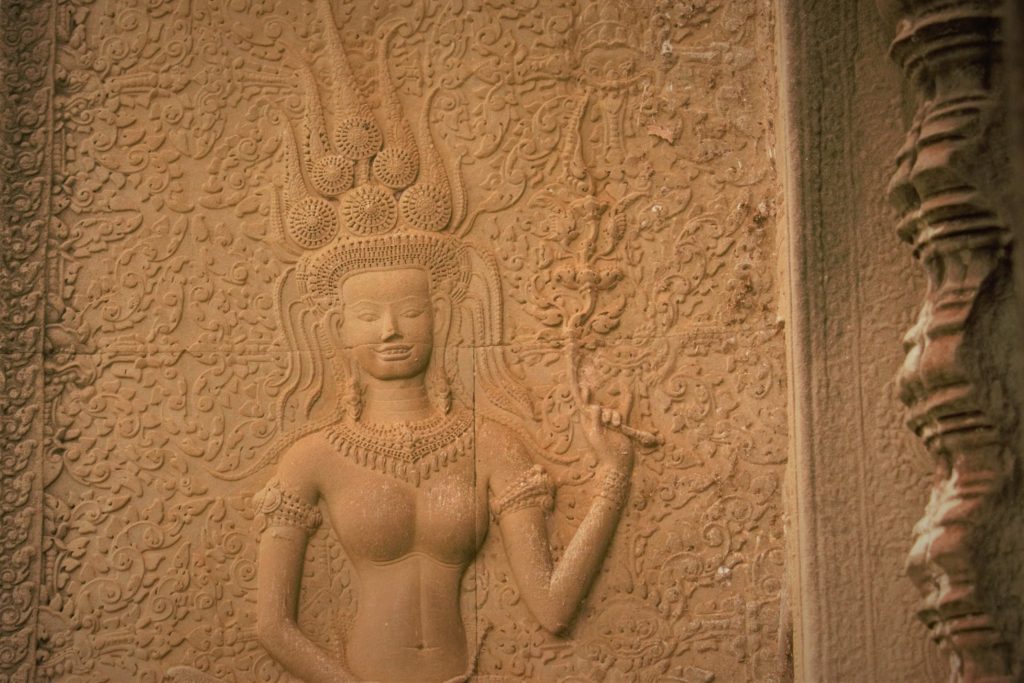
APSARA – Authority For Protection of the Site and Management of the Region of Angkor, is the administrative body headquartered in Siem Reap. APSARA is responsible for the conservation, protection, and administration of the Angkor Archaeological Park.
Angkor Wat FAQ
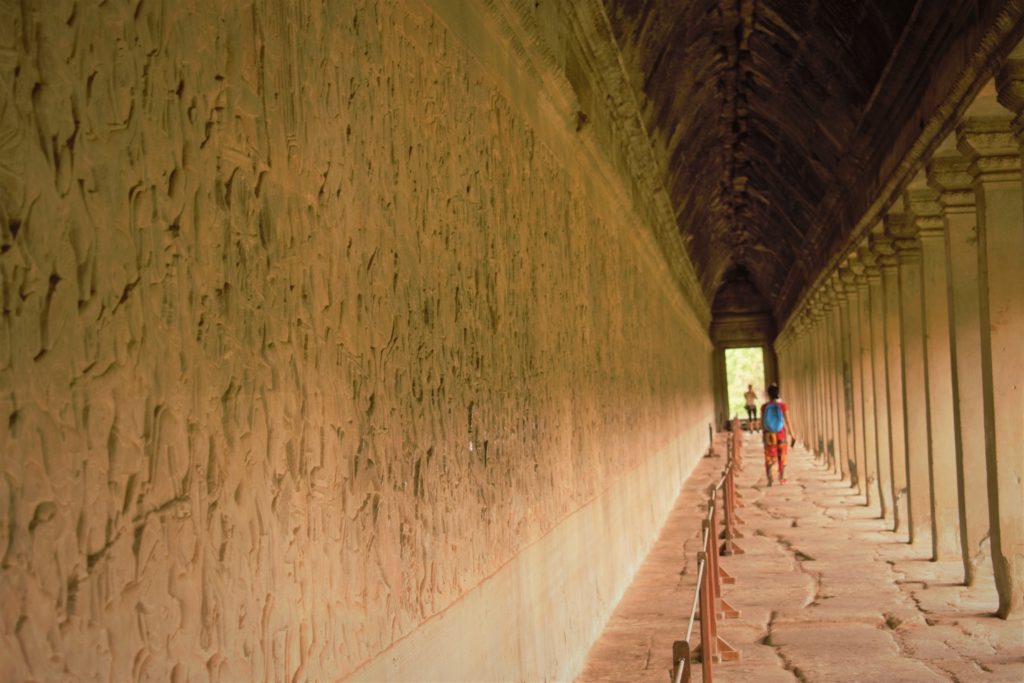
What was Angkor Wat built for?
Angkor Wat was built as a Hindu temple to Vishnu. Some, however, believe that it even could have been built as a tomb for its builder King Suryavarman II.
What is Angkor Wat used for?
Angkor Wat was originally a Hindu temple and later converted into a Buddhist temple. Even today an idol of Vishnu with eight arms is worshipped.
Why is Angkor Wat famous?
Angkor Wat is the largest religious complex in the world and unrivaled in grandeur.
Is Angkor Wat Hindu or Buddhist?
In terms of Angkor Wat religion, the temple was originally built as a Hindu temple dedicated to the Hindy God Vishnu. However, later on, it was converted into a Buddhist temple.
Why does Angkor Wat face West?
This is one of the Angkor facts that has mystified experts as other temples face east. Some believe that the temple was associated with funeral rites and hence faces west.
When was Angkor Wat abandoned?
It is believed that Angkor Wat met its nemesis during the 15th century.
Why is Angkor Wat important to Cambodia?
Angkor Wat is one of the most important tourist destinations in modern-day Cambodia.
Why did the Khmer empire fall?
The exact reasons for the fall of the Khmer Empire are not known. However, it is believed that the grand empire did not fall the advancing footsteps of an invading army but to the forces of nature. Floods followed by drought conditions are believed to have led to the abandonment of the kingdom.
Who was the greatest king of the Khmer empire?
King Jayavarman II is considered to be the greatest of the Khmer Kings. He is known as a great builder who not only built temples and palaces but also undertook numerous public utility projects including reservoirs, and hospitals.
Why was Angkor Wat of importance to the Khmer empire?
If one reads Angkor Wat history, it is clear that the Angkor Wat was King Suryavarman II’s labor of love. A grand monument that symbolized the glory of his kingdom, something without parallel anywhere in the world.
How old is Angkor Wat Cambodia?
The Cambodia Hindu Temple which later was converted to a Buddhist temple, Angkor Wat is about 900 years old. It was built in the early 12th century, between 1100-1150.
When was Angkor Wat discovered?
Angkor Wat was rediscovered in the 19th century around 1860.
When was Angkor Wat built?
Angkor Wat was built in the 12th century between 1100-1150
Cambodia Tourism
How To Get To Angkor Wat, Siem Reap, Cambodia
- Angkor Wat is located within the Angkor Archaeological Park in Siem Reap, Cambodia
- Angkor Wat is located about 6 kilometers from the Siem Reap Airport
- One can fly to Siem Reap directly or fly to Phnom Penh and then drive down to Siem Reap
If you are planning to visit Angkor Wat, you can book a flight through TripAdvisor or Agoda or CheapAir or Cleartrip or Makemytrip or Priceline.
Where To Stay In Siem Reap, Cambodia
If you are planning for a stay in Siem Reap there is a wide choice of hotels to suit your budget and preference. You can book your hotel in Siem Reap right here through TripAdvisor or Cleartrip or Agoda or Makemytrip or Priceline and get awesome deals and savings.
| Click here to book the best hotel/resort in Siem Reap |
|---|
Tours/Activities available in Siem Reap – Things To Do In Siem Reap
Siem Reap points of interest and attractions are many and if you are wondering what to see in Siem Reap or what to do in Siem Reap, then look no further. Siem Reap attractions pass are available for the most recommended Siem Reap tours. You can now book tours in Siem Reap as well as activities in Siem Reap.
| Click here to know more and book Best Attractions and Activities in Siem Reap. |
|---|
We hope you found our post about exploring Angkor Wat interesting. When you visit the place we hope our post would have equipped you with the things you should know about Angkor Wat. We hope you enjoy exploring the Angkor Wat mysteries when you get there. However, if you feel that there are more things about Angkor Wat you should know before getting there, do connect with us.
Do You Love Traveling?
Do you want to know how to travel the world? We have put together a very useful travel resources page with best travel tips. Go check it out now.
Thanks for visiting our site Voyager – imvoyager.com and taking the time to read this post!
If you wish to collaborate/work with us then reach us at [email protected]
We’d love if you’d comment by sharing your thoughts on this post and share this post on social media and with your friends.
[shareaholic app=”share_buttons” id=”27413782″]
Follow our journey on our social media channels:
Facebook Twitter Instagram Pinterest G+ YouTube
60+ Million Users Trust TripAdvisor With Their Travel Plans. Shouldn’t You?



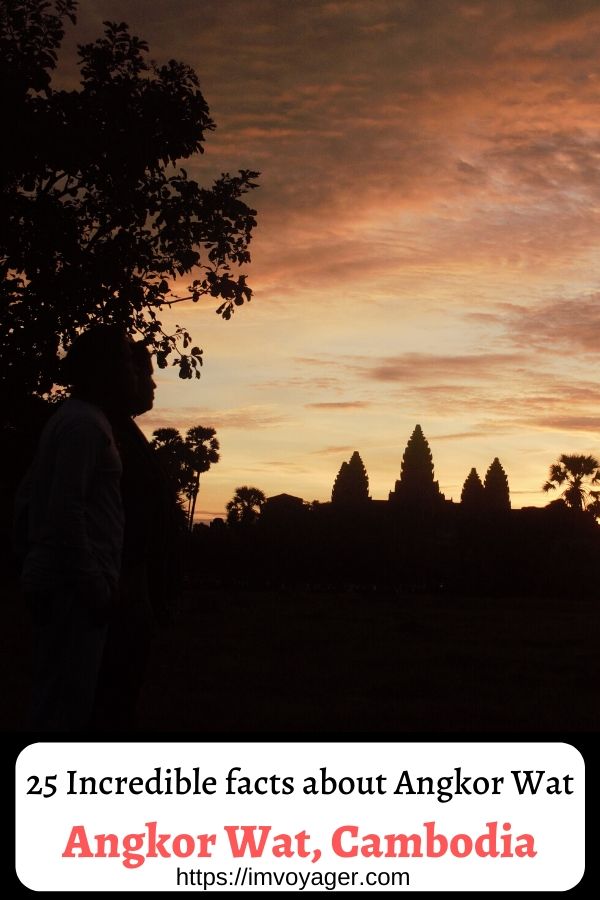

I was in Angkor Wat in 2009. I spent a week exploring these temples. It’s one of the most beautiful places I’ve ever seen. So, your article has brought back lovely memories. I understand that now there are many more tourists. You described detailed, fascinating facts about Angkor Wat. It is worth seeing this place. It is a helpful guide.
We were mesmerized by pictures of Angkor Wat when our son visited. But we really did not know much about this site until I read this post. We knew it was big but did not realize how big. Or that its west facing direction was unusual. It is always stunning to realize how long it took to build structures such as these. And as a civil engineer the construction details area always fascinating to read about. I do hope we can find places that are secluded and not crowded when we visit. It would be great to just take this amazing site all in.
I learned a lot about Angkor Wat from your post. I knew little about it before. It’s crazy that there are 2.6 million visitors a year and you can still find a secluded spot. It really must be huge! Interesting that it is a little different than other temples in regards to which direction it faces and its orientation.
I really didn’t know Angkor Wat was just one temple and the Bas Reliefs are stunning, interesting that they go in an anti-clockwise direction. I can imagine it did take 30 years to build, it’s such an impressive structure. Visiting Cambodia is high up on my list – reading your article about Angkor Wat pushed it up a little further.
Cambodia is somewhere I’m yet to visit, and Angkor Wat would be top of the list. You’ve listed many facts that I wasn’t aware of. I never knew that it was a Hindu, cum Buddhist, temple or that it was just one temple! I feel very prepared for a visit should we get to travel there one day.
We visited Angkor Wat back in 2017, and absolutely enjoyed, but to be honest, wasn’t aware about so many facts about Angkor Wat then! This is really a well researched, and articulated article, giving out all the essential information, enough to make any one curious for sure!
Cambodia is absolutely on my bucket list and same goes for Angkor Wat. Such a marvel of engineering. Didn’t l ow it took 30 years to build.
I got a question though. How is it that it was Hindu and then converted into Buddhism. I find that very amazing since both religions have a few fundamental differences.
So interesting, I didn’t realize it was named after one temple and not the complex. 30 years and 300,000 people to construct it is incredible. I absolutely love the significance behind the name stairway to heaven.
I love Angkor Wat and have visited twice. I didn’t know all the facts though so it was a very interesting read for me. I have managed to spend a lot of time there and seen it reflected in the lake when the sun rises and then also during the day. It is an intriguing temple as it still has many questions that can’t be answered.
Wow a great guide to the Temple of wonders. Always on the bucket list. I am planning to visit it soon. Definitely bookmarking your post.
Hi, your picture at “22. Ancient Indian Script Inside Angkor Wat” shows some ancient Indian script. To me it seems similar to the old style Tamil Language we used to write by hand in our homes before going to school in Thanjavur, Tamilnadu! Not all characters but many are recognisable.